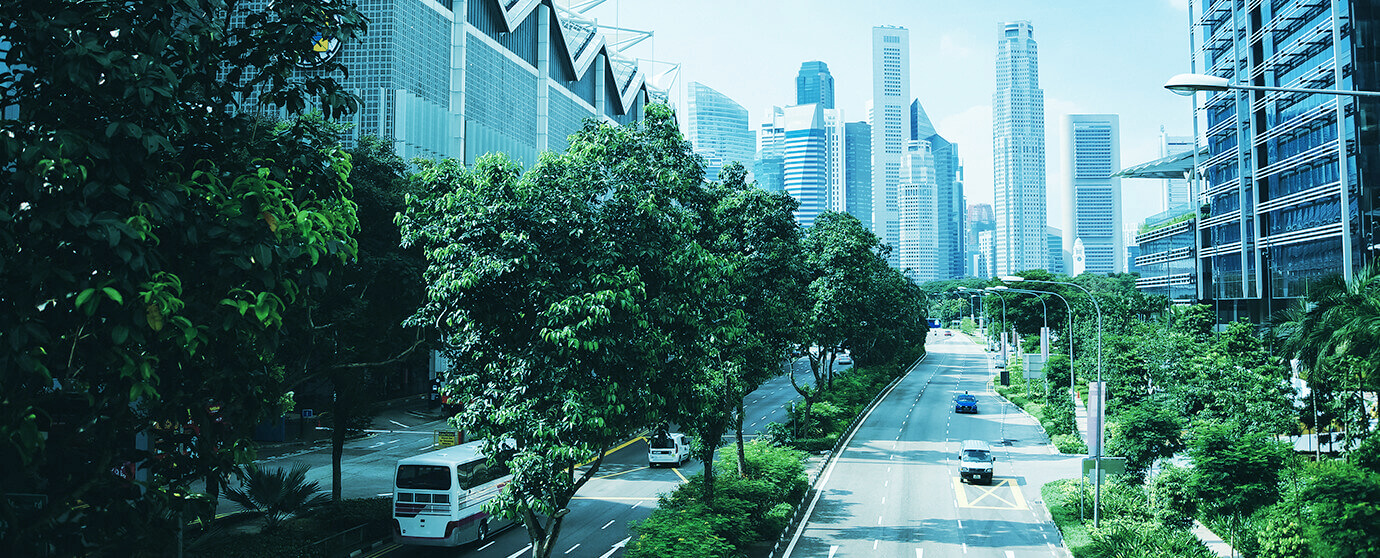
91% of the world’s population live in places where air quality exceeds WHO guideline limits. Perhaps unsurprisingly, the most polluted places in the world are the major cities, where poor urban planning has led to urban sprawl and over-reliance on private rather than public transport. These have both been identified as major contributing factors in worsening air quality and, subsequently, public health.
So where can governments and city-planners turn to solve these problems? All over the world they are already looking to private sector organisations to enhance public services, notably through various smart-city initiatives.
Though definitions and interpretations vary, in very basic terms a smart-city is an urban area in which data is collected from connected infrastructure via an ‘internet of things’ then used to manage systems, resources and assets more effectively. This provision of data allows citizens and local, regional, national and international authorities to understand where air pollution is created, which spots have the worst air quality and, subsequently, where solutions must be deployed to tackle the problem.
Helping Us to Help Ourselves
All of us who have ever given our data away online understand that it is being used behind the scenes for targeted advertising, to develop marketing strategies or to improve our experience with the organisation collecting it. One company, however, is seeking to use data we provide for free to dramatically lessen the causes and effects of air pollution.
Adventure of Lifetime OU have received EU funding to further develop their community-focused geo-location app Geme.io. Currently, the app allows you to discover and personalise your own map by connecting with other individuals and businesses in your area.
Future plans for the app, however, include alerting users to high levels of pollution in specific areas and collecting voluntary data from users themselves to inform others of plans which may cause congestion (for example, if a business is expecting a delivery or someone is moving house on a certain day). These updates will allow users to avoid high pollution areas and busy routes, thus reducing traffic and decreasing their exposure to pollutants. This is an ambitious way to use data, which so many of us provide already via our smartphones and wearables, for the public good.
The View from Space
This month brought exciting news of a project from WattTime (funded by Google’s philanthropic arm ‘Google.org’) to use satellite imagery to track air pollution and emissions from all power plants on earth and make that data public.
Using available photographic and sensor data from such networks as Landsat and Copernicus, WattTime aims to detect visible smoke, heat and nitrous oxide from power plants to create a picture of which power plants are the most polluting. This will provide an objective source of emission data, thus enabling vastly improved pollution monitoring and aiding developers in maximising emission reductions.
Sensing Danger
Others are more grounded, monitoring air quality using data from sensors on earth, analysing this and using the results to shape policy, improve service provision and increase our knowledge of the effects of exposure to harmful pollutants.
Last month, Cellcom Israel and Nokia agreed to install sensors at existing radio sites to gather comprehensive environmental data on noise, wind, dust, air quality and hazardous gases. The aim is to allow Cellcom Israel’s customers in various sectors (e.g. transport and healthcare) to receive the data through subscription and use to it to develop new services and ways of operating. These could include such things as allergy alerts, better urban planning and rerouting traffic based on pollution levels.
Not unlike this plan, but on a much smaller scale, is the recent installation of air pollution monitors in those London hospitals located in the most polluted areas of the capital. This will allow hospitals and NHS facilities both to assess the impact of measures they are already taking to improve air quality (such as implementing no idling schemes) and to conduct further research into the relationship between air pollution and health effects.
The Hamburg Connection
A city which has received a great deal of attention in the ‘smart city’ arena is Hamburg. Various solutions to air quality issues have been implemented around the city, including bike schemes and smart streetlighting, but perhaps the most interesting developments have come from the Hamburg Port Authority’s (HPA) smartPORT initiative.
smartPORT projects use a series of intelligent networks and smart sensors (provided by Cisco) around the vast Port of Hamburg to optimise the flow of trade and traffic, reducing the emission of traffic-related air pollution and greenhouse gases. Key projects under the smartPORT umbrella which aim to reduce harmful emissions include:
To combat air quality problems caused specifically by maritime operations in its busy port, the government in Hamburg also engaged Siemens to construct a shore connection system to provide power to ships when berthed. Previously, ships had generated electrical power via diesel generators, creating large amounts of CO2, NOx and other dangerous particulates. Using Siemens’ SIHARBOR system, these ships are now able to shut down their generators and draw power from the mainland pollution-free.
Final Thoughts
Enhancing public services through data utilisation and development of new technology is therefore crucial in the fight against air pollution. Without research organisations and private companies providing comprehensive data to those responsible for urban design and planning, the problem would never be fully understood and the causes could never be addressed successfully. How this data is collected and used varies wildly, compare WattTime’s satellites with London’s air pollution monitors, but each method contributes towards the same goal of cleaning our air.
Following Clean Air Day, it may be time to reflect on how businesses, citizens, and government can use innovative technologies to help tackle air pollution.
This was blog was written and researched by Ed Leach, Serco.